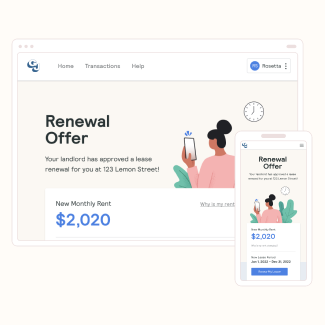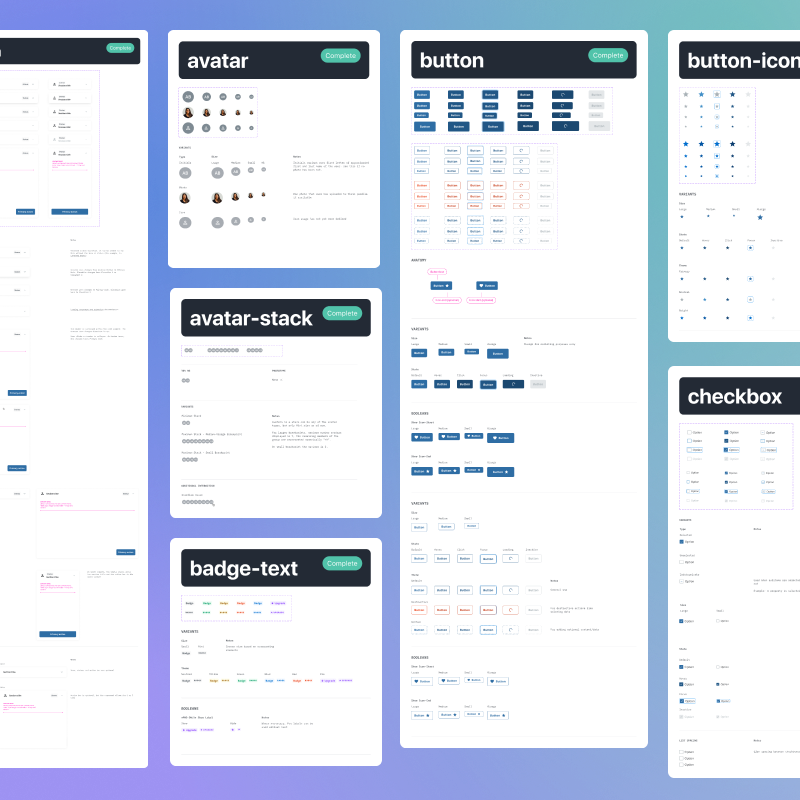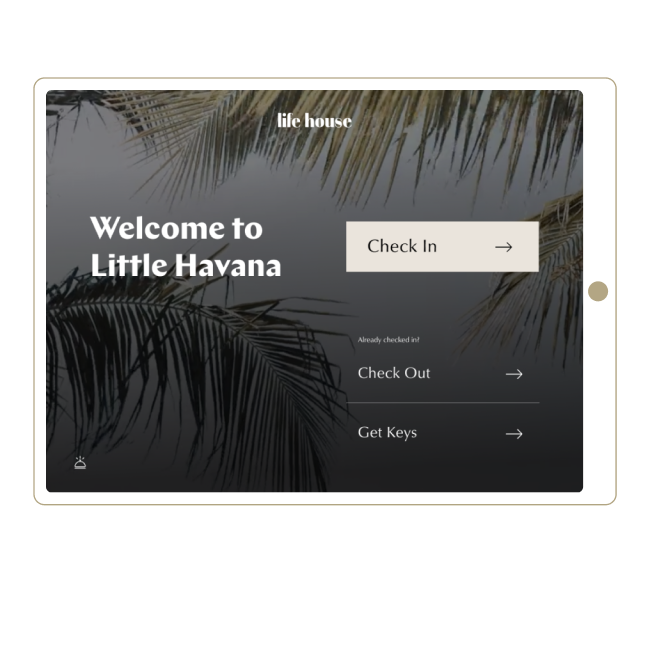Emma Holder
About

Overview
About Great Jones
Great Jones is a tech-forward property management company with a mission to make owning residential rental real estate profitable and transparent.
My role
I led design and strategy with production support from a fellow designer. We worked in collaboration with the product manager and three engineers.
Problem(s)
Renewals cause a large number of inbound tickets for the CX team, using valuable time and resources to answer avoidable queries
- Manual processes are an inefficient use of renewal team time and is prone to errors
- Average renewal rate of 45% is significantly lower than the industry standard of 65%
- Lack of structured data prevents us from being able to understand what factors contribute to our lower renewal rate and finely tune a solution
Success metric
Reduce inbound tickets by 50%
Success metric
Achieve industry standard renewal rate (65%)
Additional goal
Define baseline mix of actions taken by our residents at time of renewal
Solution
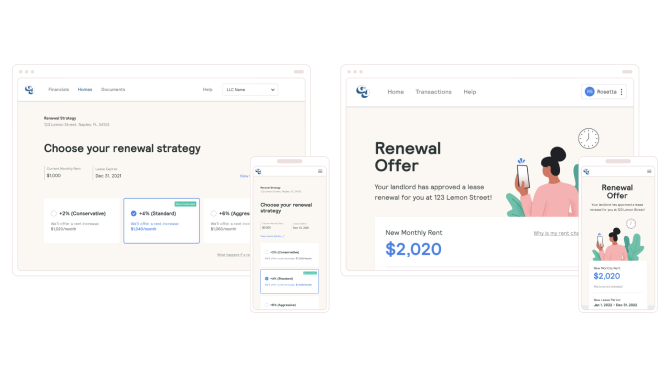
Here’s how we did it

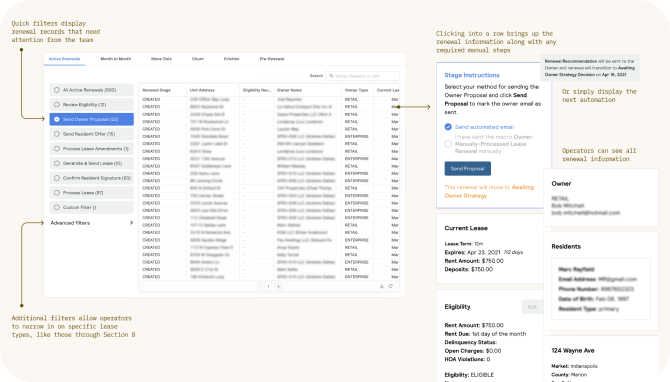
Conclusion
More projects

Overview
About Great Jones
Great Jones is a tech-forward property management company with a mission to make owning residential rental real estate profitable and transparent.
My role
I led design and strategy with production support from a fellow designer. We worked in collaboration with the product manager and three engineers.
Problem(s)
Renewals cause a large number of inbound tickets for the CX team, using valuable time and resources to answer avoidable queries
- Manual processes are an inefficient use of renewal team time and is prone to errors
- Average renewal rate of 45% is significantly lower than the industry standard of 65%
- Lack of structured data prevents us from being able to understand what factors contribute to our lower renewal rate and finely tune a solution
Success metric
Reduce inbound tickets by 50%
Success metric
Achieve industry standard renewal rate (65%)
Additional goal
Define baseline mix of actions taken by our residents at time of renewal
Solution
Self-service renewal experiences for residents and investors, both supported by internal tooling.
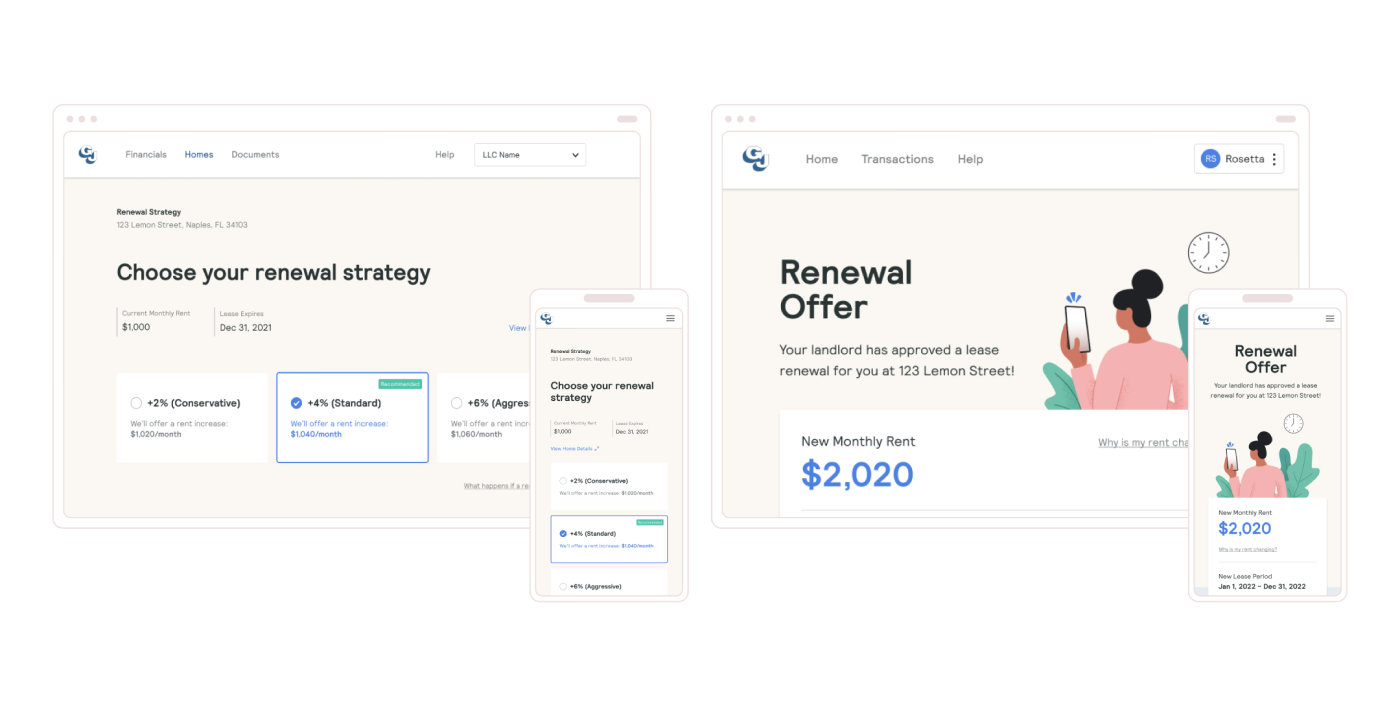
Here’s how we did it
Discovery
Internal interviews and working sessions helped us understand the manual steps required to complete one renewal. We identiefied several key issues:
- Primarily manual steps, few automations
- Delays occur
Process diagram
User Experience
We oriented the experience around a revised renewal timeline, working outwards from a key date of 90 days to lease end – the date a resident should receive their renewal offer.
I mapped out the experience, documenting dates for sending and receiving information from each user type.
This mapping took the place of traditional wireframes; having an established design system in place, we felt comfortable moving into iterating on the UI itself.
Design and iteration
Investor experience:
We kept the scope here fairly small, using email to direct the user to their Great Jones portal where they were able to choose a renewal strategy. Other touch points with investors were primarily self-serve in the portal or updates via email.
View prototype
Design and iteration
Resident experience:
When a resident receives a renewal offer, they have the opportunity to choose one of four paths:
- accept the offer
- decline and give move-out notice
- opt for a month-to-month lease
- negotiate the offer
Each of the first three options are self-service, and if the resident chooses to renew they can sign their lease on the spot.
View prototype

Internal tooling
To facilitate the user-facing products, we re-built the internal workflow used to track and action renewals.
Previously, all renewals were being tracked in Airtable, where our ability to automate actions was limited. To upgrade, we built a custom workflow in Retool that centralizes information and any actions that are required.
Using Retool meant giving up control over some UI details, but allowed us to build and iterate quickly.
The workflow itself comprises 10 steps, but with automations in place most renewals are completed without operator intervention until the lease is counter-signed.
We created quick filter functionality to surface renewals that did require manual intervention.
From each list, the operator can click into a renewal record to view details and required steps to move the renewal along towards signing.
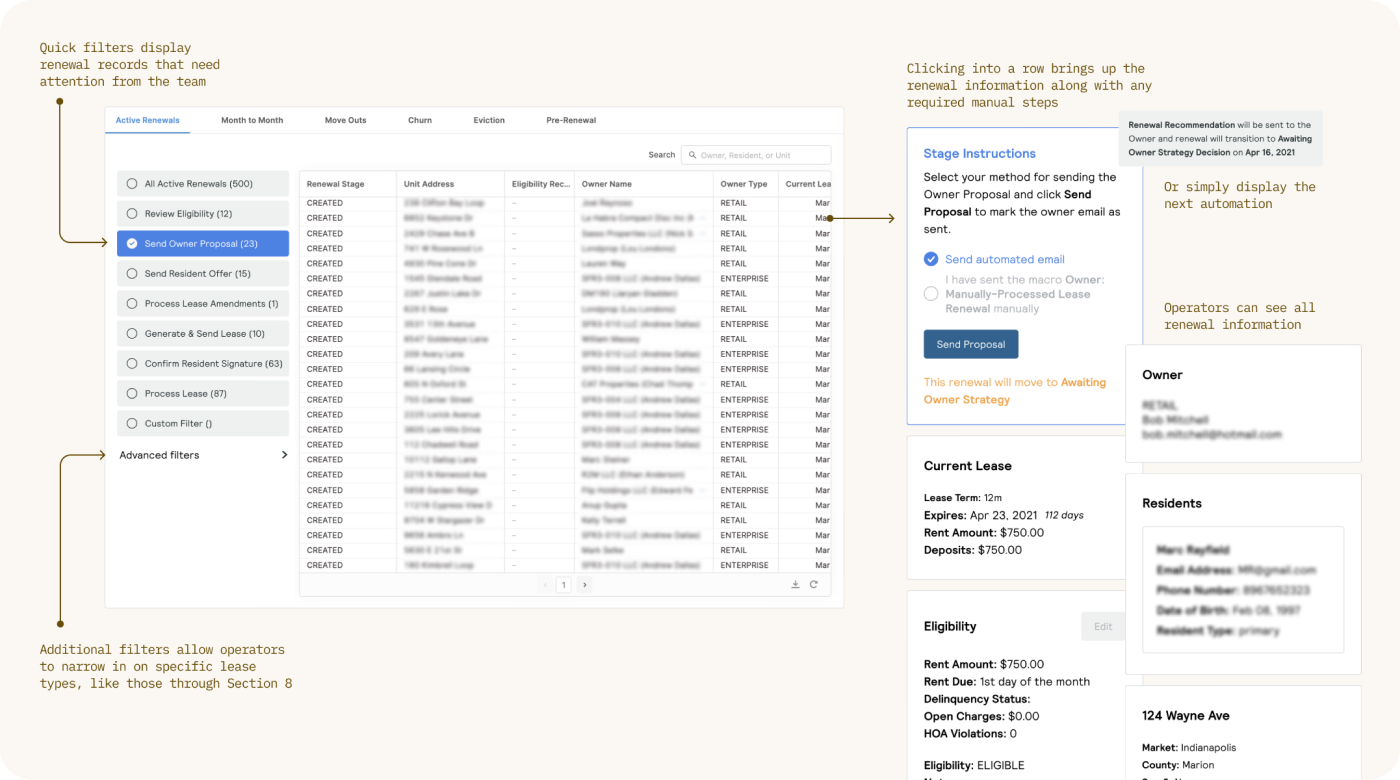
Conclusion
Six months after launch, over 80% of renewals were flowing through the process without manual intervention and our renewal rate increased to a steady rate of over 65%.
More projects
Emma Holder
About
Emma Holder
About
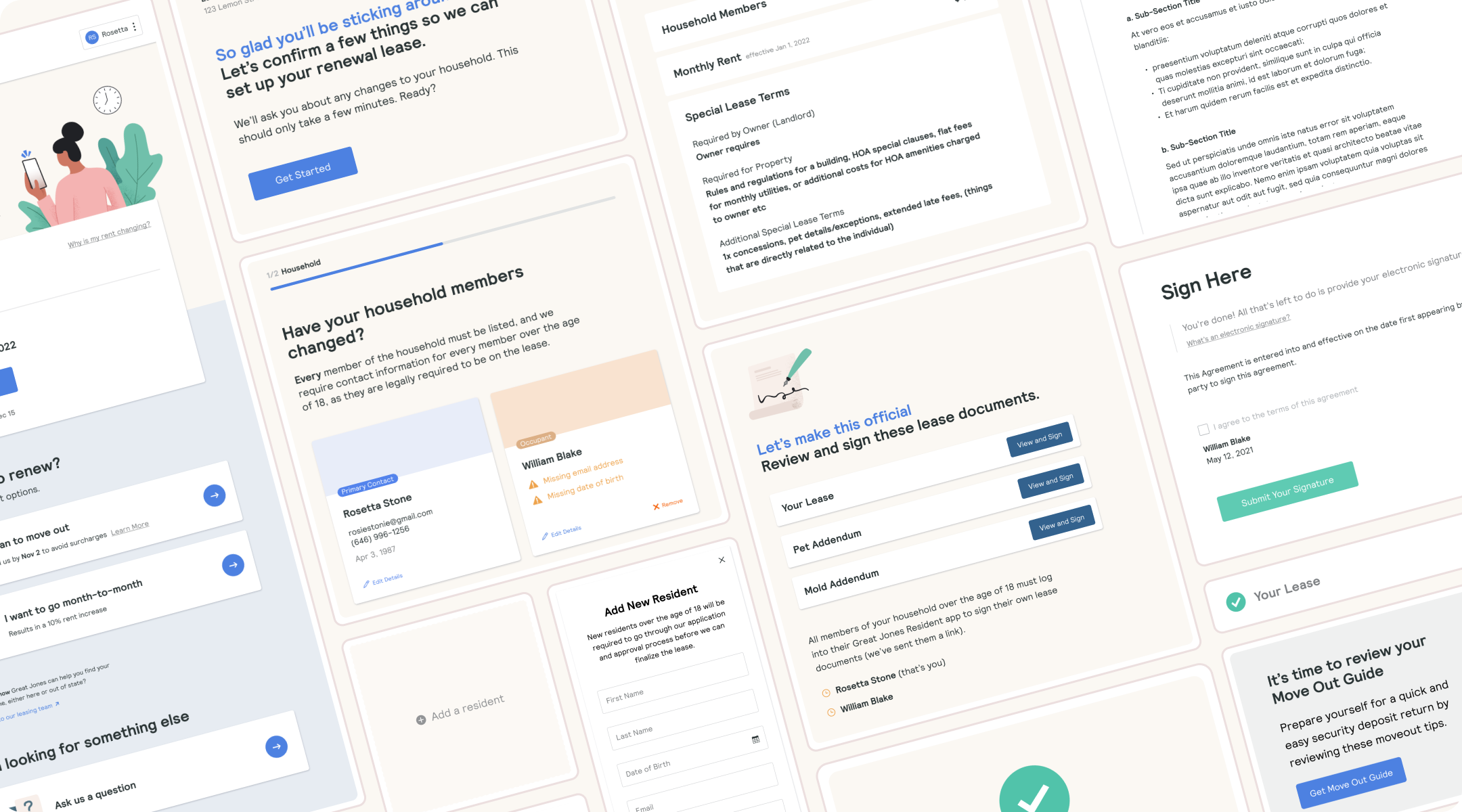
Overview
About Great Jones
Great Jones is a tech-forward property management company with a mission to make owning residential rental real estate profitable and transparent.
My role
I led design and strategy with production support from a fellow designer. We worked in collaboration with the product manager and three engineers.
Problem(s)
Renewals cause a large number of inbound tickets for the CX team, using valuable time and resources to answer avoidable queries
- Manual processes are an inefficient use of renewal team time and is prone to errors
- Average renewal rate of 45% is significantly lower than the industry standard of 65%
- Lack of structured data prevents us from being able to understand what factors contribute to our lower renewal rate and finely tune a solution
Success metric
Reduce inbound tickets by 50%
Success metric
Increase renewal rate to 65%
Additional goal
Define baseline mix of actions taken by our residents at time of renewal
Solution
Self-service renewal experiences for residents and investors, both supported by internal tooling.
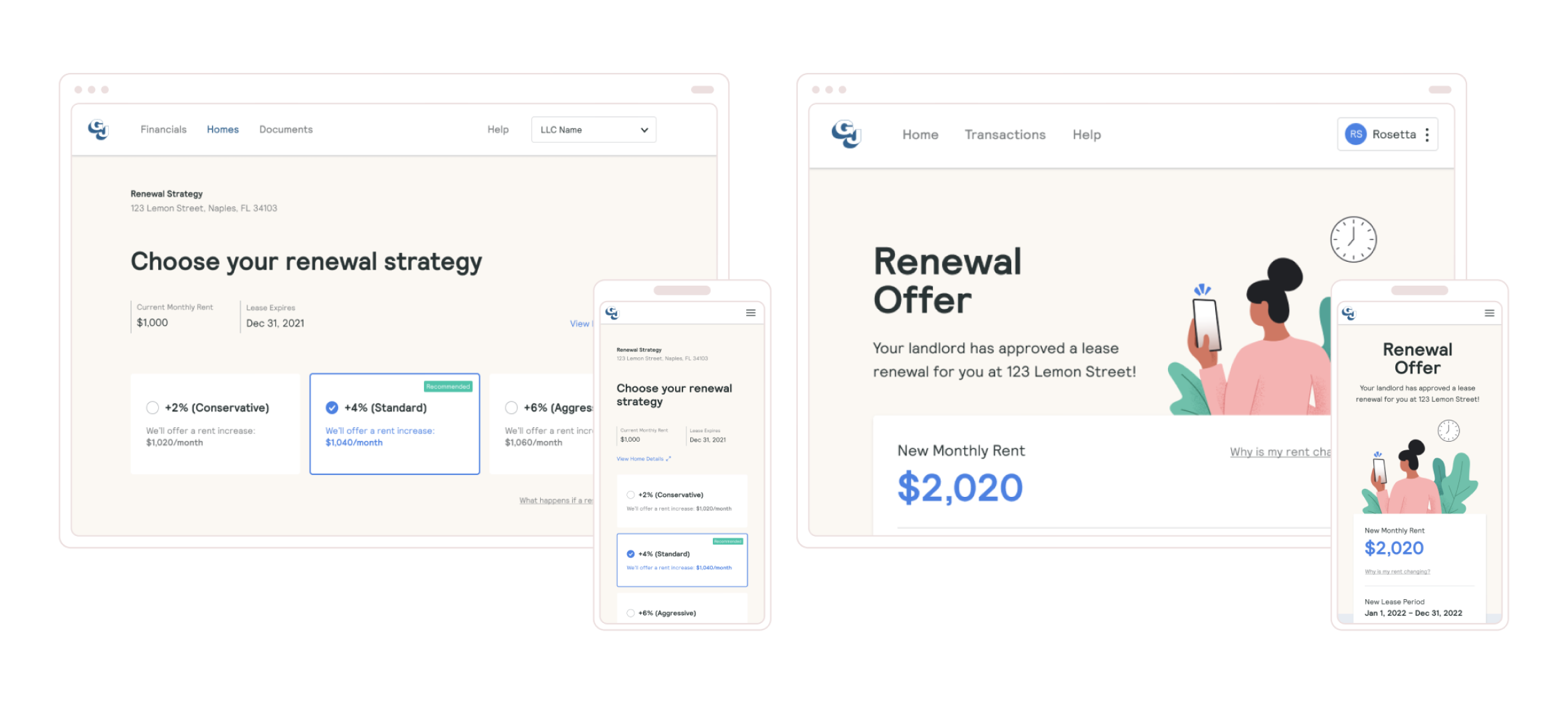
Here’s how we did it
Discovery
Internal interviews and working sessions helped us understand the manual steps required to complete one renewal. We identified several key issues:
- Primarily manual steps, few automations
- Delays occur while waiting for responses from customers
- Nuances and regulations require special attention for HOAs and Section 8 housing
- Process built around internal team’s capacity and capabilities rather than user needs
In conversations with residents we gathered feedback on the renewal process and discovered that some challenges were big enough to make residents consider not renewing their leases. Challenges revolved around two main themes:
- Trust – inaccuracies and errors lead to a break down in confidence over time; residents don’t want to live in a home if they don’t trust the management
- Communication – external communication was disjointed and internal system failure made it difficult for residents to seek support from our teams
From here we made a key strategic decision to focus on the resident experience. Our belief was that by addressing resident needs we could achieve timely and more consistent renewals – a benefit for our end-customer, the investor.
User Experience
We oriented the experience around a revised renewal timeline, working outwards from a key date of 90 days to lease end – the date a resident should receive their renewal offer.
I mapped out the experience, documenting dates for sending and receiving information from each user type.
This mapping took the place of traditional wireframes; having an established design system in place, we felt comfortable moving into iterating on the UI itself.
Design and iteration
Investor experience:
We kept the scope here fairly small, using email to direct the user to their Great Jones portal where they were able to choose a renewal strategy. Other touch points with investors were primarily self-serve in the portal or updates via email.
View prototype
Design and iteration
Resident experience:
When a resident receives a renewal offer, they have the opportunity to choose one of four paths:
- accept the offer
- decline and give move-out notice
- opt for a month-to-month lease
- negotiate the offer
Each of the first three options are self-service, and if the resident chooses to renew they can sign their lease on the spot.
View prototype

Internal tooling
To facilitate the user-facing products, we re-built the internal workflow used to track and action renewals.
Previously, all renewals were being tracked in Airtable, where our ability to automate actions was limited. To upgrade, we built a custom workflow in Retool that centralizes information and any actions that are required.
Using Retool meant giving up control over some UI details, but allowed us to build and iterate quickly.
The workflow itself comprises 10 steps, but with automations in place most renewals are completed without operator intervention until the lease is counter-signed.
We created quick filter functionality to surface renewals that did require manual intervention.
From each list, the operator can click into a renewal record to view details and required steps to move the renewal along towards signing.
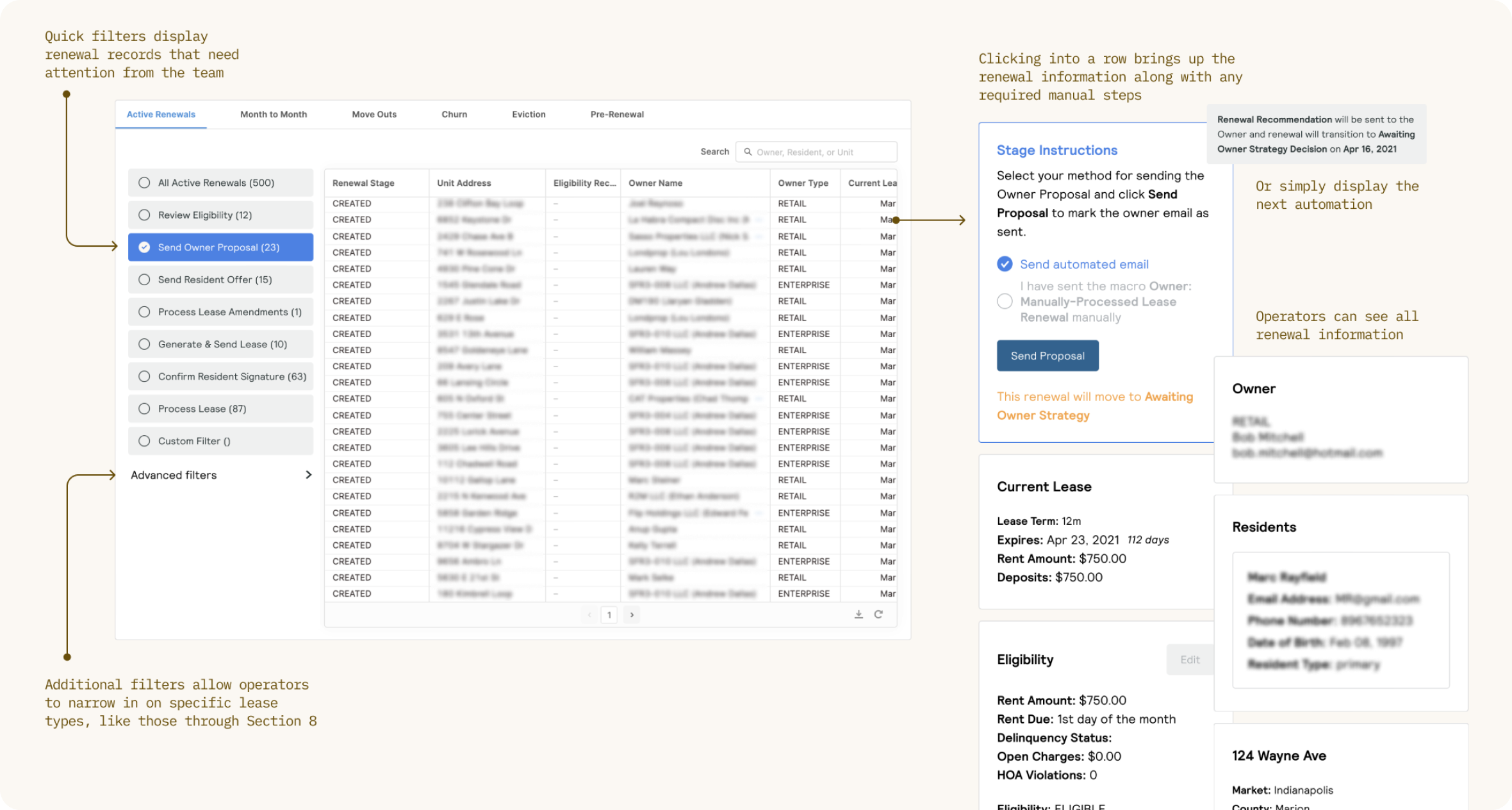
Conclusion
Six months after launch, over 80% of renewals were flowing through the process without manual intervention and our renewal rate increased to a steady rate of over 65%.
